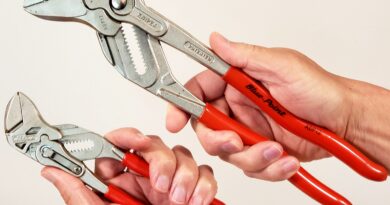R 1200 RT: A two-wheeled rocket ship
There are all sorts of ways to ride these days and a BMW for every style. Luxury tourers have the K 1600 GTL. Racers have the S 1000 RR. Off-roaders have the GS in a variety of displacements. We’ve been told that sport tourers have the R 1200 RT, but the people telling us that are only partially correct.
I enjoy the luxury of having three BMWs at my disposal. My mainstay, day-to-day bike is the 2005 R 1200 GS that was the subject of the recent multi-part tech series. In addition to the GS, I have a 1998 K 1200 RS with a Hannigan Classic sidecar that I use for taking my wife or kid on trips. Finally, for those lazy days, I picked up a 2003 R 1200 CLC over the winter and have been enjoying the cruiser lifestyle from time to time.
When I picked up this 2016 R 1200 RT to test, I wasn’t sure what to expect. I imagined I’d go into old man mode—after all, isn’t that who rides RTs? Old men? Stereotypes exist for a reason, right? Seeing as how I’m still under 50, I figured it would be a short test: I’d ride it, I’d hate it, I’d apologize for wasting everybody’s time.
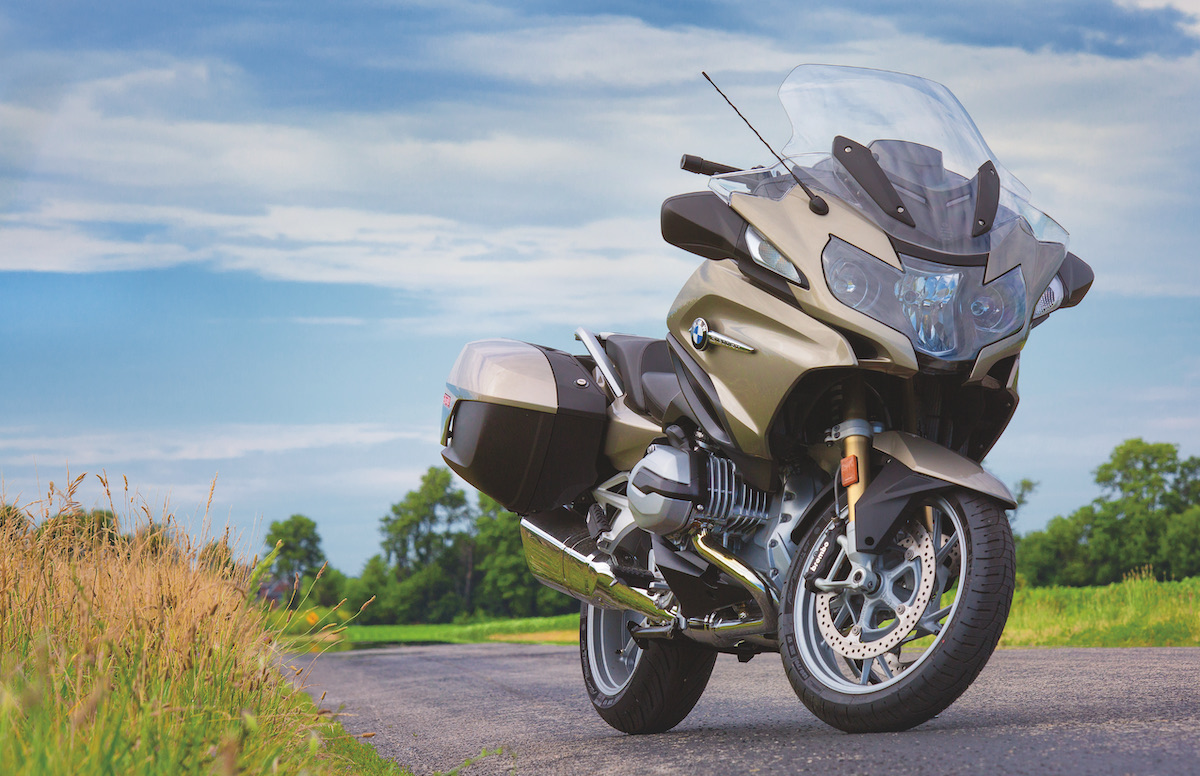 I couldn’t have been more wrong more quickly if I tried. From the first time I rode the RT, I knew it was a bike that absolutely shouldn’t be restricted to old men. Instead of focusing on sport touring, by necessity I found myself focused on commuting. My round-trip between home and work totals 45 miles, and nearly all of it is interstate highway. The first thing I noticed about the RT is that it compresses the highway time in a Star Trek-like fashion. Once I got on the highway, it seemed like I had only gone a few miles before it was time to get off. Between the smooth power delivery and the cruise control, eating up highway miles on the RT is effortless.
I couldn’t have been more wrong more quickly if I tried. From the first time I rode the RT, I knew it was a bike that absolutely shouldn’t be restricted to old men. Instead of focusing on sport touring, by necessity I found myself focused on commuting. My round-trip between home and work totals 45 miles, and nearly all of it is interstate highway. The first thing I noticed about the RT is that it compresses the highway time in a Star Trek-like fashion. Once I got on the highway, it seemed like I had only gone a few miles before it was time to get off. Between the smooth power delivery and the cruise control, eating up highway miles on the RT is effortless.
After several weeks of commuting to the shop and going on longer rides on the weekends, I recognized an odd dichotomy with the RT. It both requires you to think less and causes you to think more. Thinking less comes from the physical operation of the motorcycle. The throttle is smooth and responds cleanly and crisply no matter what riding mode you’re in (naturally, in Dynamic mode the response is more linear, but even in Rain mode you feel the bike responding immediately).
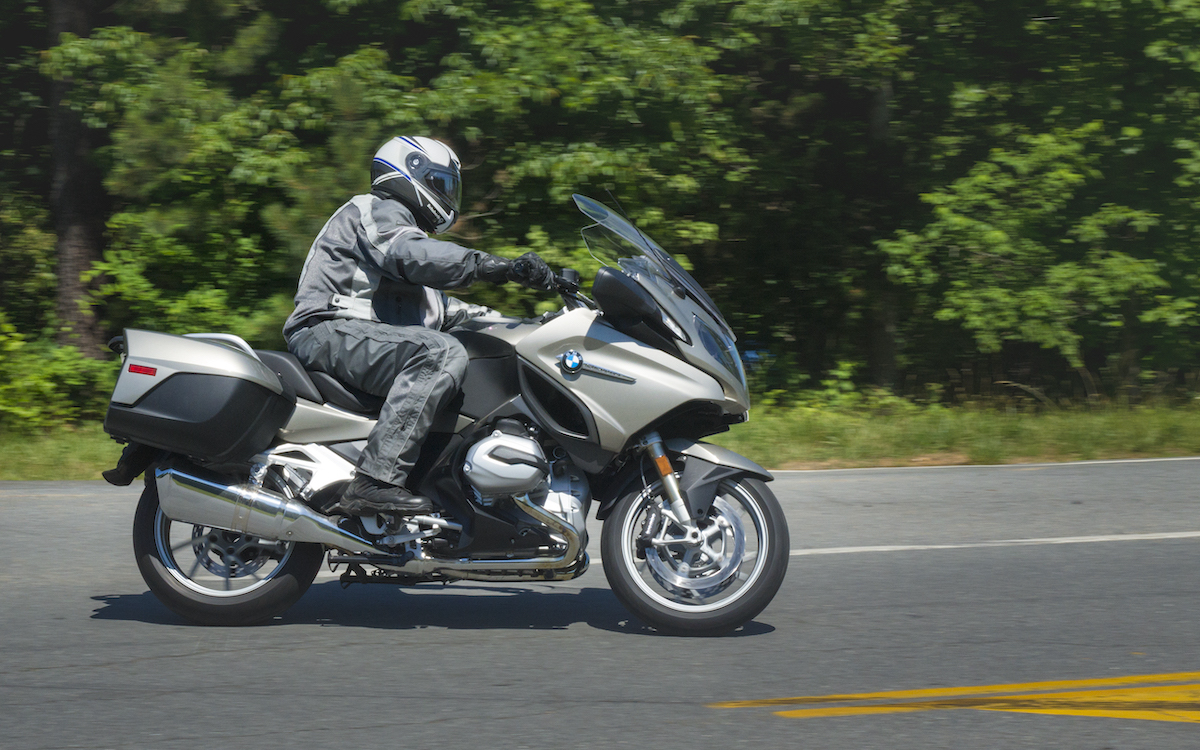 Shift Assist Pro makes changing gears almost an afterthought, especially in gears three through six. Whether you’re shifting up or down, the computer does the hard work, and you just toe the shift lever. It seems trite to use the word effortless again, but shifting when you don’t have to worry about the clutch really is effortless. Up or down, it doesn’t matter. The only hitch is that Shift Assist Pro has some difficulty getting into or out of first gear. The transition up from second to third is a little rough if you’re going slowly. The procedure I found that works best is to upshift north of 5,000 rpm; with the engine turning fast, Shift Assist Pro can do its work most efficiently. It’s an impressive bit of technology that suits tight, curvy roads, as you can shift up and down through the gears with impunity, never moving your left hand from the grip and never having to worry if you’re in the right gear.
Shift Assist Pro makes changing gears almost an afterthought, especially in gears three through six. Whether you’re shifting up or down, the computer does the hard work, and you just toe the shift lever. It seems trite to use the word effortless again, but shifting when you don’t have to worry about the clutch really is effortless. Up or down, it doesn’t matter. The only hitch is that Shift Assist Pro has some difficulty getting into or out of first gear. The transition up from second to third is a little rough if you’re going slowly. The procedure I found that works best is to upshift north of 5,000 rpm; with the engine turning fast, Shift Assist Pro can do its work most efficiently. It’s an impressive bit of technology that suits tight, curvy roads, as you can shift up and down through the gears with impunity, never moving your left hand from the grip and never having to worry if you’re in the right gear.
The suspension functions quite well without much active intervention from the rider. The system has the typical Rider, Rider + Luggage, and Rider + Passenger settings; at my weight and riding style, I found Rider + Luggage to be the best setting. I tried the Soft and Hard settings as well, but Normal gave me the best combination of comfort and feedback. Hard is truly hard, but it gives the feeling of being directly connected to the road through the hands, feet and seat. During technical riding, especially on complex back roads, the combination of Dynamic, Hard, and Rider + Luggage was perfect. Out on the highway, Normal and Soft made for a plush ride that could last all day, with the only distraction being a little noticeable heat coming off the left side and blowing onto the rider’s leg.
Thinking more comes from everything ancillary to the operation of the go and stop controls. This is a highly computerized motorcycle, and changing any of the settings requires the use of the Menu button and the Wonder Wheel. Scrolling is obvious—toward the front to go up, the rear to go down—and selecting an option takes just a quick “click” to the right. “Clicking” the wheel to the left exits back out through the nested menus.
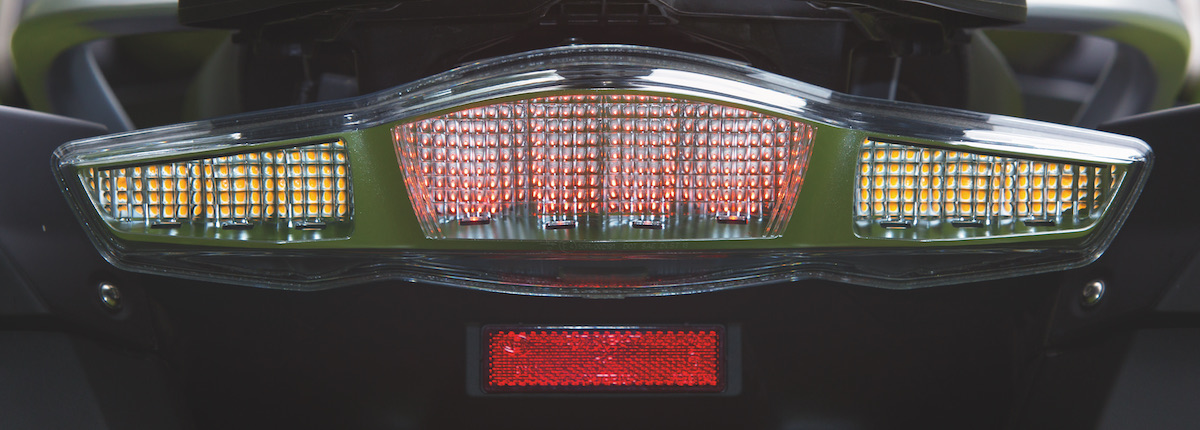 It is a little brain-taxing to have to navigate through the menus to activate the heated grips (which work great) or heated seat (which is AMAZING on a cold morning!), but BMW provides a shortcut. If you navigate to a menu you want to access quickly, pushing up on the Menu switch and holding it saves that menu in memory. Then you can hit the diamond icon on the Menu switch (up), and it navigates straight to that menu. I set my “favorite” menu to the heated grips, which puts the heated seat menu just one press of the Menu button away. The nice thing about the heat for the grips and the seat is that there are six settings from low to high rather than the two we’re used to with the Lo-Hi switches on previous generations of BMWs. Still, it’s a lot of thinking to do while you’re riding and should be paying attention to the road.
It is a little brain-taxing to have to navigate through the menus to activate the heated grips (which work great) or heated seat (which is AMAZING on a cold morning!), but BMW provides a shortcut. If you navigate to a menu you want to access quickly, pushing up on the Menu switch and holding it saves that menu in memory. Then you can hit the diamond icon on the Menu switch (up), and it navigates straight to that menu. I set my “favorite” menu to the heated grips, which puts the heated seat menu just one press of the Menu button away. The nice thing about the heat for the grips and the seat is that there are six settings from low to high rather than the two we’re used to with the Lo-Hi switches on previous generations of BMWs. Still, it’s a lot of thinking to do while you’re riding and should be paying attention to the road.
Some menus are unavailable while the bike is in motion, and that’s a good thing. Riding mode, suspension mode and other riding-specific settings are available on the move, but you don’t need to switch the clock from the 12-hour setting to the 24-hour at 45 miles per hour. The only computer control issue I encountered was accidentally bumping the Wonder Wheel and skipping a song on the stereo when reaching my thumb for the turn signal switch. I recommend reading the owner’s manual carefully and thoroughly to start with as deep an understanding of the computer system as possible.
I found the 2016 R 1200 RT to be a fantastic motorcycle that, with some attention to the ergonomics, could very well be perfect for me. The seat in the high position isn’t quite high enough, though I could easily flat-foot the bike when stopped. The foot pegs are slightly too high for my long-distance comfort; 50 miles was fine, but 200 made my hips and knees ache. The reach to the handlebars is just barely on the aggressive side, requiring me to lean forward a tiny bit, but not excessively.
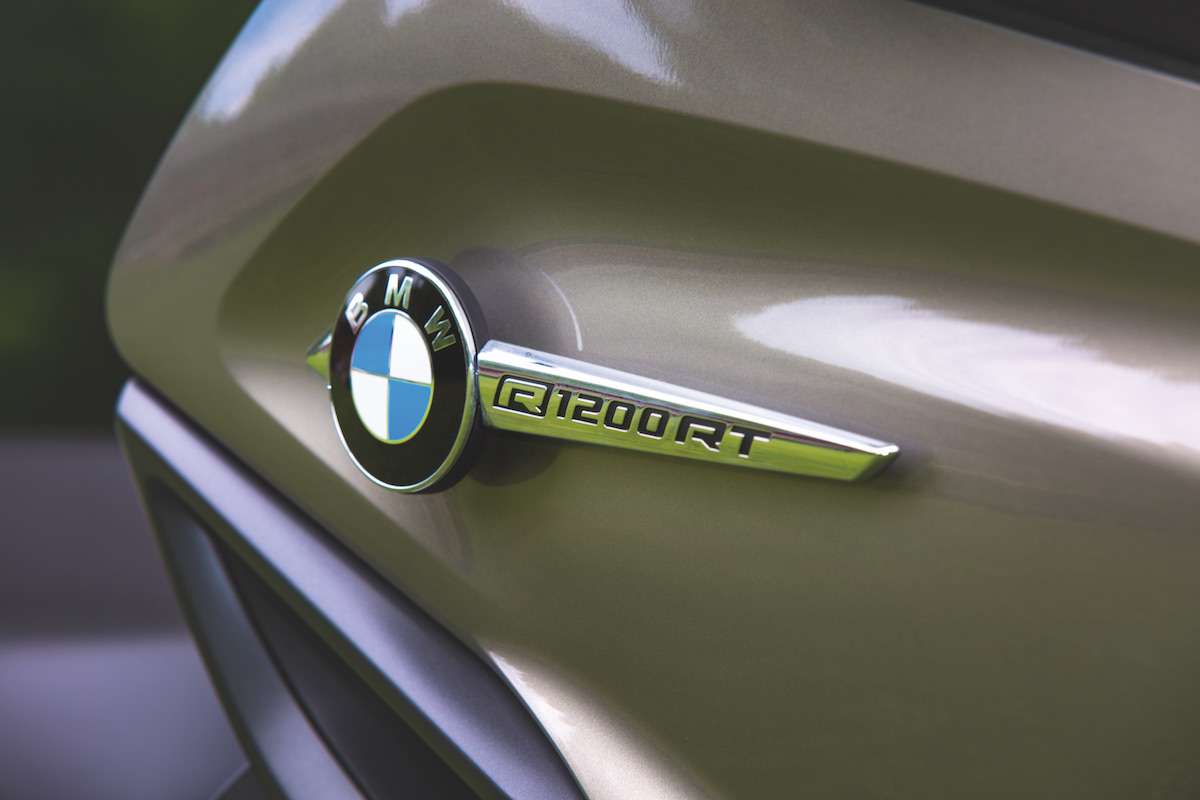 I swapped bikes with a friend who has a 2015 R 1200 RT, and other than the model year, I noticed only two differences between his bike and mine: he has the factory tall seat on his, and he has a smaller aftermarket windshield. His bike was quite a bit more comfortable seating-wise, so it’s apparent that a taller seat and lower foot pegs would do the trick for somebody my height or taller. The smaller, more rounded windshield made for quieter air flow, but neither bike displayed any significant buffeting from wind. It could be that my friend’s aftermarket windshield shifts the wind noise into a higher frequency range that I don’t hear well, while the stock 2016 RT produces its wind noise in a lower range to which I am more sensitive. It would be nice to raise the handlebars a smidge and move them slightly towards the saddle, and to have a taller seat as well. Making these changes would open up my hip and knee angles and cause less complaining from my tired spine, but having said that, I think the ergonomics of the RT would be near perfect out of the crate for anybody between about 5’8″ and 6’0″.
I swapped bikes with a friend who has a 2015 R 1200 RT, and other than the model year, I noticed only two differences between his bike and mine: he has the factory tall seat on his, and he has a smaller aftermarket windshield. His bike was quite a bit more comfortable seating-wise, so it’s apparent that a taller seat and lower foot pegs would do the trick for somebody my height or taller. The smaller, more rounded windshield made for quieter air flow, but neither bike displayed any significant buffeting from wind. It could be that my friend’s aftermarket windshield shifts the wind noise into a higher frequency range that I don’t hear well, while the stock 2016 RT produces its wind noise in a lower range to which I am more sensitive. It would be nice to raise the handlebars a smidge and move them slightly towards the saddle, and to have a taller seat as well. Making these changes would open up my hip and knee angles and cause less complaining from my tired spine, but having said that, I think the ergonomics of the RT would be near perfect out of the crate for anybody between about 5’8″ and 6’0″.
My biggest complaint—if you can even call it that—was about the size and shape of the side cases. The side cases are beautifully integrated into the lines of the bike, and the color matching on the lids is perfect. BMW’s claim that a full-face helmet will fit in the cases is obviously based on somebody with a smaller head than I have, as my XXL Arai Defiant doesn’t fit inside either side case. (I should note, however, that my helmet doesn’t even fit in ANY case that claims “swallows two full-face helmets!” which is one of the problems with having a giant head!) Another thing that doesn’t fit easily is my briefcase. Like many people, I carry a laptop computer back and forth between home and work, and I carry it in a messenger-style shoulder bag that is difficult to cram into the side case when the laptop is inside it. I found a bag in my collection that fit into the side case with a little effort, but years of being able to drop my briefcase unhindered into one of the Jesse cases on my GS have clearly spoiled me when it comes to transporting my computer.
The side cases aren’t small though, despite my comments about what fits in them. I was easily able to carry my Moto Hansa tool kit, a tire pump, a tire repair kit, my rain gear, a Nelson-Rigg half cover and my lunch in one side case. Into the other went my laptop, a spare pair of gloves and any layers I might need to wear throughout the day. On the occasions I needed to haul larger items, I used the lash points (grab handles and top case plate) supplied on the bike and held things down with Rok Straps. If I was going to buy this bike, I’d likely put a top case on it, both for the convenience of transporting items and to provide a back rest for any passenger I might have.
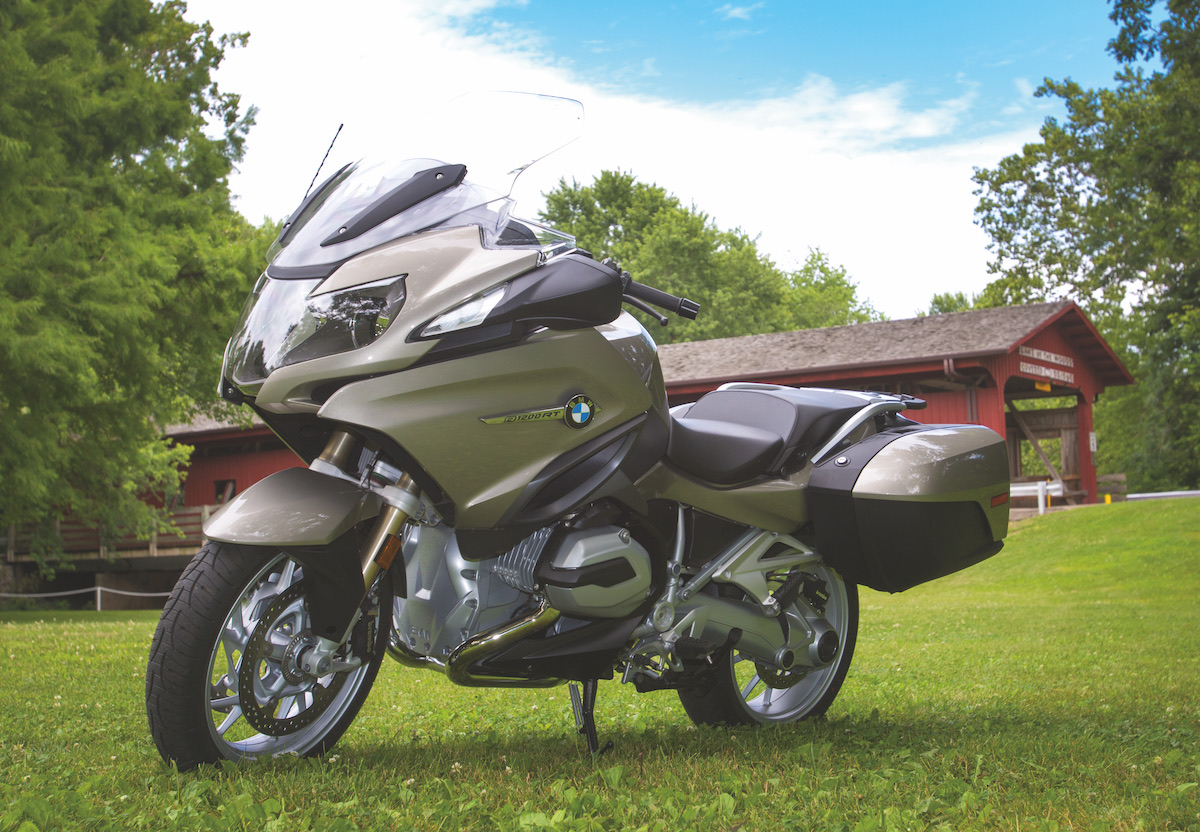 Speaking of passengers, I took my wife (5’8″ with a long inseam) on about a 100-mile ride, and she praised the passenger seat and ergonomics. She said the bike felt smooth at all speeds and mentioned that she hardly noticed when I shifted gears. This tells me two things: 1) the Shift Assist Pro really is that good, and 2) I clearly need to work on my clutch technique when riding bikes without Shift Assist!
Speaking of passengers, I took my wife (5’8″ with a long inseam) on about a 100-mile ride, and she praised the passenger seat and ergonomics. She said the bike felt smooth at all speeds and mentioned that she hardly noticed when I shifted gears. This tells me two things: 1) the Shift Assist Pro really is that good, and 2) I clearly need to work on my clutch technique when riding bikes without Shift Assist!
The 2016 R 1200 RT is a great all-around bike. It is smooth, but the brand-new bike suffers from some minor vibrations through the grips between about 3500 and 4500 rpm; given my experience on my friend’s year-old RT with over 20,000 miles on it, I have no doubts it will get smoother as the miles go by. In addition to its incredible poise (and easy-to-operate cruise control) on the highway, I wouldn’t hesitate to take it on hard dirt or gravel roads. The weather protection afforded by the full fairing and large, adjustable windshield can’t be beat. Fuel efficiency is about average for the water-cooled 1200s (mid-40s mpg) and the ergonomics out of the crate should suit most riders. The power is mind-bending (80 mph in 6th gear is well under 5,000 rpm) and the electronic adjustments for mode and payload make every ride a great one, whether you’re heading to the corner for a gallon of milk (two of which do fit in the side case), going for a long weekend jaunt, or pointing your nose towards the opposite coast.

